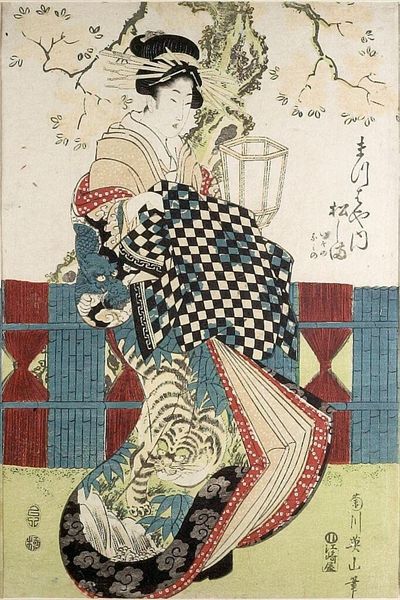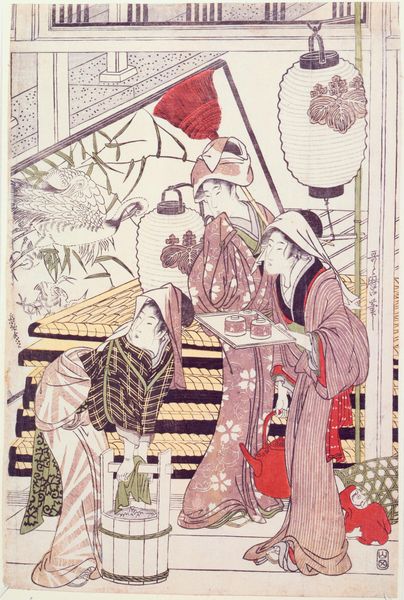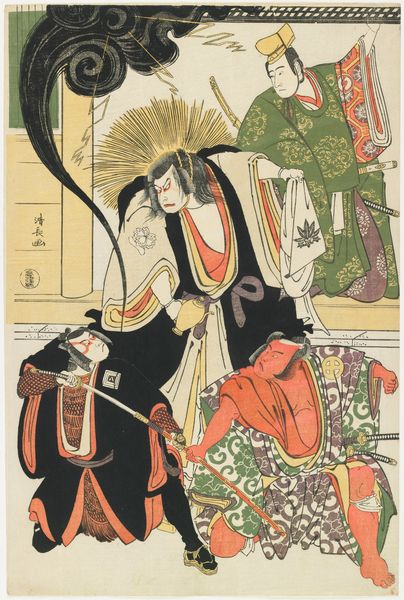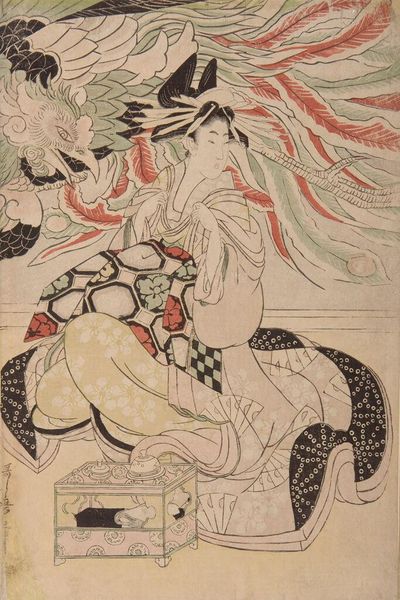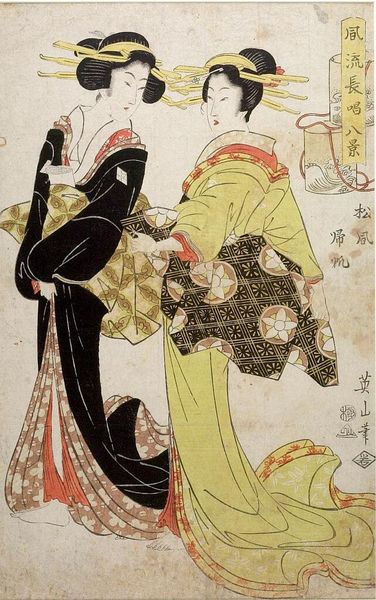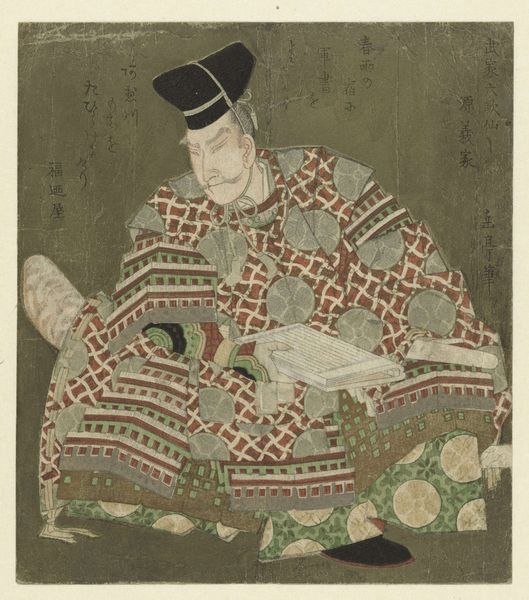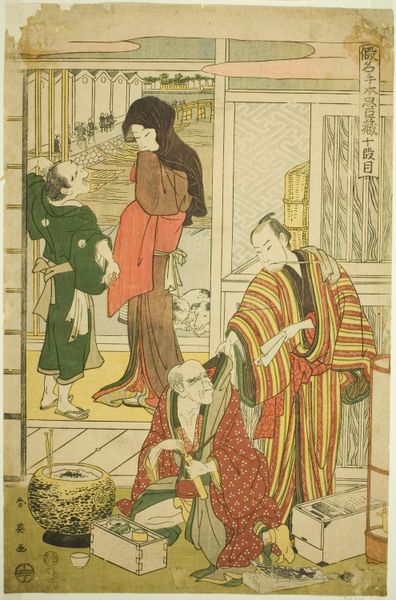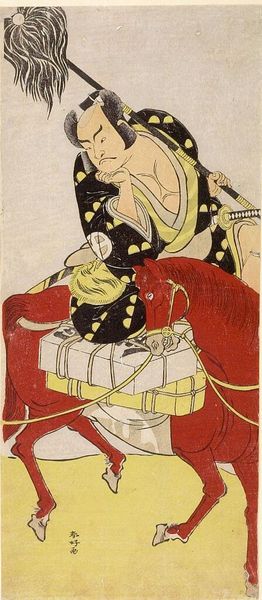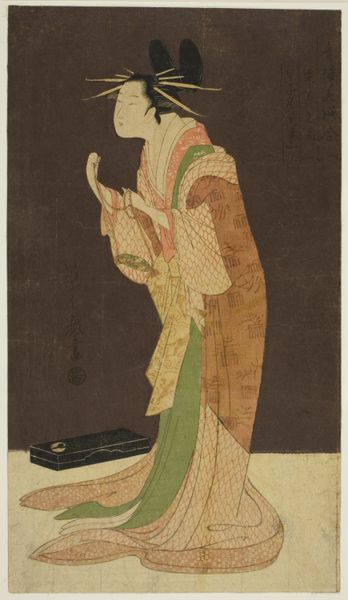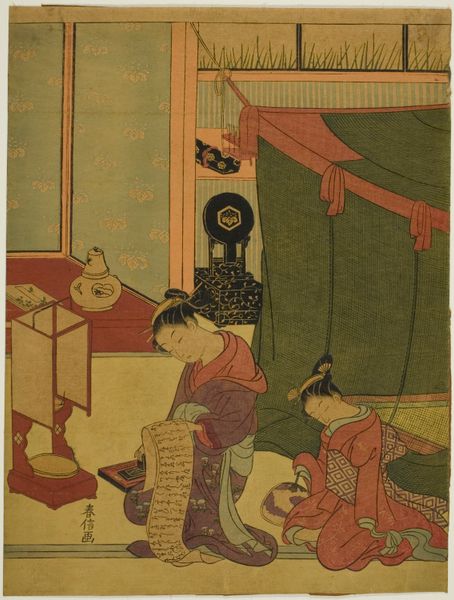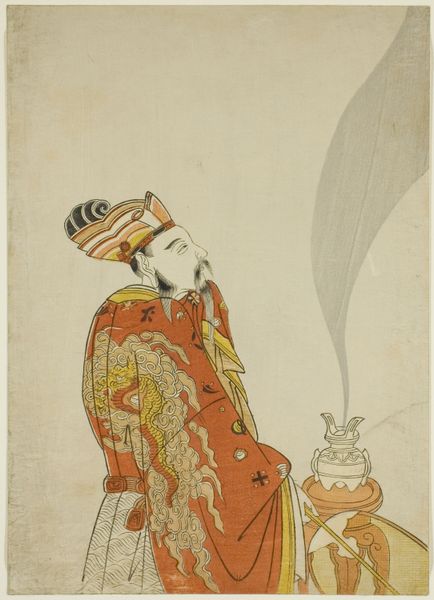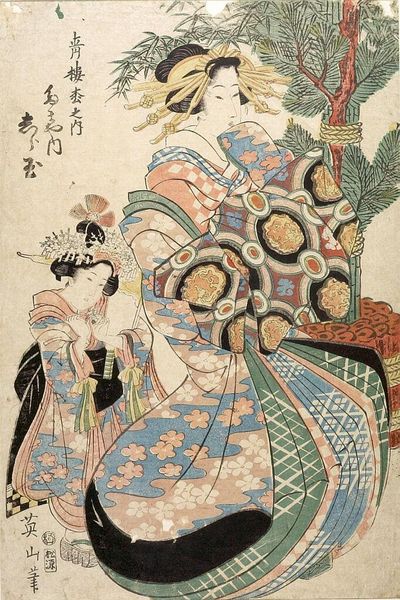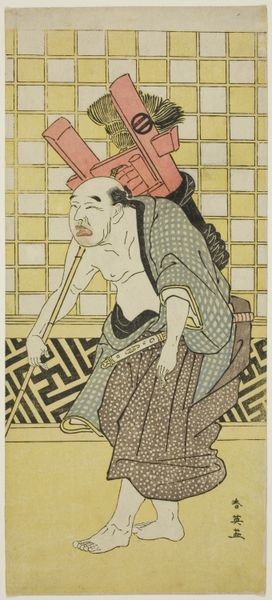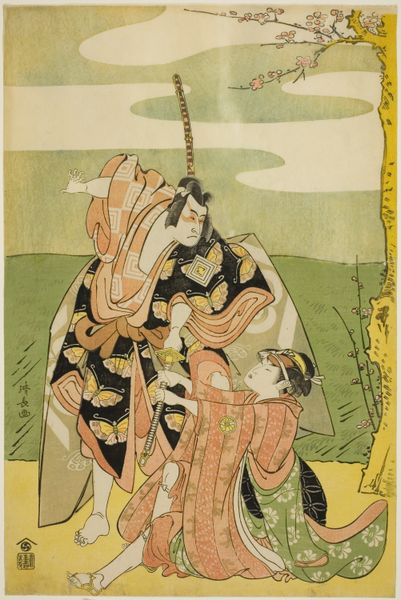
painting, oil-paint
#
portrait
#
narrative-art
#
painting
#
oil-paint
#
folk art
#
figuration
#
naive art
#
painting art
#
genre-painting
#
academic-art
#
realism
Copyright: Modern Artists: Artvee
Curator: Norman Rockwell's 1939 oil painting, "The Jester," offers a slightly melancholic study of a character whose profession demands levity. What catches your eye first? Editor: The textures, definitely! I see the contrasting textures created from the materiality of his clothing, his shoes are rendered like matte, sturdy leather that probably bears the wear of travel and physical work. This conflicts directly with the idea of a "Jester" character we may initially conjure. Curator: Right, Rockwell really plays with that. It’s fascinating to me how the composition focuses on the figure in a state of repose rather than performance. You know, a lot of Rockwell's genius lay in those subtly narrative details. Editor: Narrative for sure. The materials speak volumes about the jester's life. The little bells attached to his garment— are these cheap alloys that reflect the jester’s low income and need to craft humor as capital? Are his costume's patterns meant to both distinguish his particular act and make his craft legible and consumable to those from whom he makes a living? Curator: Absolutely! His outfit practically shouts "Look at me!" But there’s this other layer, a somber self-reflection—that weariness you alluded to. It reminds me of those street performers who put on a brave face but might be struggling behind the scenes. He holds a smaller version of himself. Do you see him as trapped by his craft? Editor: It's definitely possible! Look how even the miniature jester-head on a stick mirrors the real one— the same melancholic gaze. His "performance" becomes a marketable image that will never grant him comfort and safety. Think about the socioeconomic factors at play: this work was painted during The Great Depression. The consumption of joyful "jesters" seems a fitting and bleak narrative. Curator: That tension is so central to the painting's enduring appeal. The craft versus the soul. A lonely figure masked by public demand for comic relief during a really tragic era. It is not as celebratory as people make it out to be. Editor: Absolutely. I'm drawn to that complexity – the material reality clashing with the expectation of carefree amusement. Curator: And I appreciate you pointing out those material nuances; they deepen our understanding and challenge our initial perceptions. The beauty of art, right? It’s never just one story. Editor: Exactly. Art is made up of these different layers. It tells the economic tale of people and labor and making as much as anything else!
Comments
No comments
Be the first to comment and join the conversation on the ultimate creative platform.
